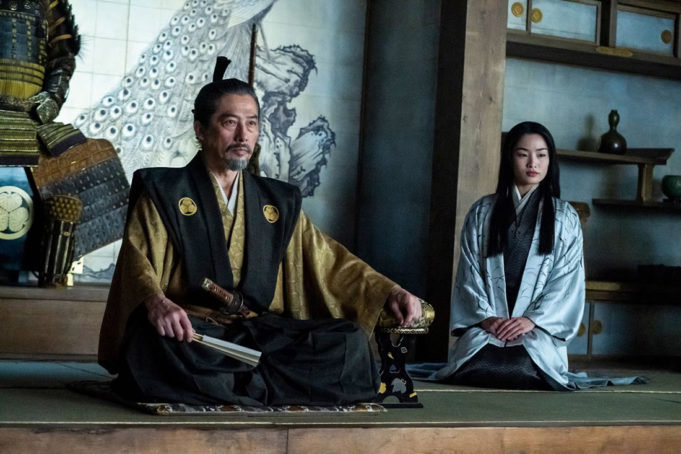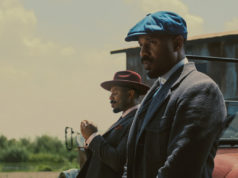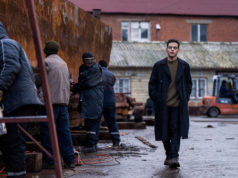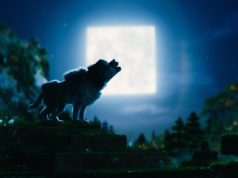The TV-watching world seemed to be waiting for Shōgun. Not only was FX’s historical series an adaptation of a bestseller of the same name from 1975, but the story had also been brought to the screen before, in 1980. While NBC’s version was clearly geared to Western sensibilities and hardly ever strayed from the POV of the main character, Euro bro Jack Blackthorne, FX homes in on the Japanese players, particularly Lord Yoshii Toranaga (Hiroyuki Sanada) and Toda Mariko (Anna Sawai). This change allows this new Shōgun to stand on its own while also respecting the culture and customs — and people — of the country where the story is set.
The tale begins with Jack Blackthorne (Cosmo Jarvis), the pilot of the Erasmus, landing on the shores of Ajiro in Japan with his crewmates in 1600. Meanwhile, 21 miles away in Osaka, Toranaga finds himself in danger of impeachment, and eventual execution, by the Council of Regents, who believe he is acquiring land to expand his power and influence. (He is.) Blackthorne and his crew become Toranaga’s hostages — the Osakan lord quickly sees the value of a warship with canons — and as the pilot goes from barbaric Englishman to civil guest/prisoner, he becomes a key player in the regents’ warring for ultimate power and control over the title Shōgun.
The series runs at a tight clip. Even when most of the action takes place in council rooms, the dialogue, acting, and reacting keep viewers questioning everyone’s motives. Toranaga feigns surrender one moment, then devises a plan to conquer the regents’ castle in another. Blackthorne may initially seem like an ignoramus, but he is a fast learner and a savvy strategist. Mariko appears reserved as Blackthorne’s interpreter for Toranaga but refuses to be talked down to.
For all you shallow folks out there, Shōgun sure is pretty to look at. The production and costume design are first-rate. The various kimonos feature elaborate patterns and hues, from earthy greens to vibrant reds, and scenes appear dark when they need to but not so much for you to question your TV calibration. Daytime shots vary between clear and hazy, overcast and rainy, and the architecture, all the houses and castles, seem born from the earth. Huts blend in with forest while castles look sculpted from mountains.
The characters are equally, delightfully varied. Blackthorne is a fish out of water quite literally as a seafarer trapped in an unknown land with his crewmates. Jarvis portrays him as confused yet intrigued by the foreign culture around him, shifting his eyes from one Japanese speaker to another, trying desperately to discern the meaning of a given conversation while also becoming exacerbated by Japan’s backward-to-him ways and customs. As Toranaga, Sanda exudes a powerful aura while remaining humble among his peers and enemies, and as Blackthorne’s interpreter, Sawai shines as arguably the heart and head of the entire series. She expertly navigates the space between her allegiance to Lord Toranaga and to her Christian faith while the actor shows a wide range of emotion just through her eyes, hinting at something simmering just below the surface. You can see — and feel — the quiet rage beneath her exquisite emotionless expression in every scene, especially when her will-they?/won’t-they? lover, the staunchly Protestant Blackthorne, informs her that the Christians from Portugal are secretly building a military base in a formerly abandoned nearby region. Taking over Japan can be the only explanation.
And while mostly dialogue-driven, there’s still a good dose of action. The hand-to-hand, sword-to-sword, and even ship-to-ship violence is expertly shot and choreographed with medium- and wide-angle lenses.
With so many named characters, it may be tricky to keep all of them straight at first, but the broad strokes of the story — an elaborate game of control and power, spanning an entire island nation — eventually untangle easily. Some side players have their own agendas. Lord Yabushige (Tadanobu Asano) tries to placate both sides of the war while Regent Lord Ishido (Takehiro Hira) tries to force the other four regents into moving against Toranaga but hits one ridiculous roadblock after another.
The series also sounds good. The music, by Atticus Ross, Leopold Ross, and Nick Chuba, makes for an otherworldly ambience. Industrial synth alternately colliding and harmonizing with traditional Japanese instrumentation underlines the show’s novel visual grandeur and spectacle.
By the finale, what really sticks are the quiet, tender moments between Mariko and Blackthorne and the intense chessboard-style drama between Toranaga and the slimy Ishido. Shōgun constantly challenges, and ultimately rewards, the viewer for taking the journey to feudal Japan. Come for the samurai fighting. Stay for the verbal warfare.












